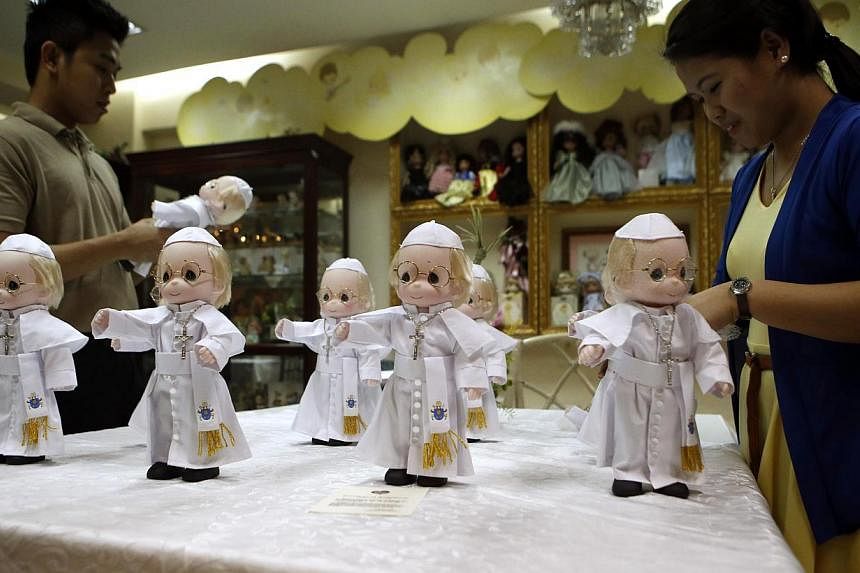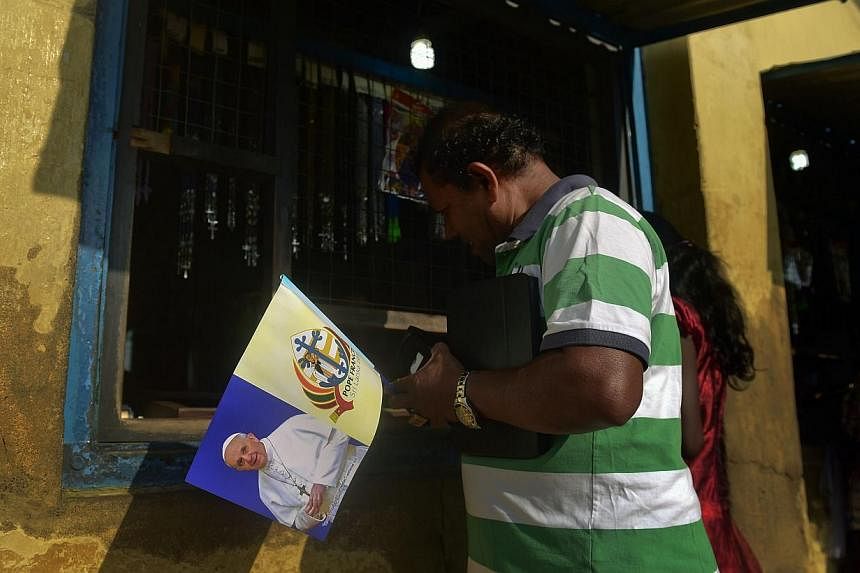Pope Francis is visiting Sri Lanka and the Philippines this week, his second trip to Asia in five months.
Millions of followers are expected to turn up at various events to catch a glimpse of the 78-year-old pontiff.
Here's a look at why his trip is significant and what will be the key highlights:
Why is the trip significant?
It comes just five months after Pope Francis visited South Korea and signals the huge importance the Vatican places on Asia and its potential for more followers, according to a Vatican spokesman.
"This second trip to Asia... is a message in itself for this great continent. It is necessary to have the pope return to this important part of the world," Father Federico Lombardi said.
He said the world's biggest continent is "a boundless terrain of evangelisation, of proclamation of the Gospel in very varied cultural, social and political situations, often very difficult".
"Therefore, it is one of the great frontiers of the Church of our time," said Father Lombardi.
He also noted that as Pope Benedict XVI was not able to make a trip to Asia, it was important to "recover a sense of the papal presence" in the continent that numbers a great part of the human population.
Vatican officials said that Pope Francis will dwell on the same issues that have been the key concerns of his papacy: poverty, inter-religious dialogue and the environment.
His visit comes exactly 20 years after Pope John Paul II made a similar visit to Sri Lanka and the Philippines. Pope Paul VI also visited both countries in 1970.
Why Sri Lanka?
Pope Francis will make a three-day stop (Jan 13-15) in Sri Lanka, where Catholics make up just 6 per cent of the nation's population of 21 million.
His key message is likely to be harmony among religions, including the struggle against religious extremism. It's very relevant in a country divided among Buddhists, Hindus, Muslims and Christians, where memories of a bloody 30-year civil war that ended in 2009 are still fresh.
Pope Francis arrived just after a bitterly contested election that saw opposition challenger Maithripala Sirisena unseat incumbent President Mahinda Rajapaksa. Though both hail from the majority Sinhalese ethnic group, which is largely Buddhist, Sirisena was strongly backed by the Hindu Tamil minority, and tensions from the campaign have many Sri Lankans on edge.
Although Catholics are just a minority in the country, many of them believe they have a mission of reconciliation since their faith is the only one with a significant following in both the Sinhalese and Tamil camps.
What's lined up?
The centrepiece of the visit will be a public Mass on the sea front Galle Face promenade in the capital of Colombo on Jan 14, which is expected to attract one million Catholics and followers of other religions. The pope will then travel to the sacred Madu church in Mannar in the north.
Why the Philippines?
The papal visit (Jan 15-19) - the fourth to be hosted by the Philippines after those of Pope Paul VI in 1970 and Pope John Paul II in 1981 and 1995 - is seen as reinvigorating the Catholic faith in the country.
The Philippines has one of the largest Catholic communities in the world - four in five Filipinos are Catholics. In recent years, however, the Catholic population not only has not grown, but has even shrunk slightly. A government report has said that just 20 per cent attend Mass regularly.
The Catholic Church is facing stiff challenges on two fronts: One is the transition to a more secular society. In 2012, a controversial reproductive health law guaranteed universal access to contraception despite strong Catholic opposition, and it was upheld in 2014 by the country's Supreme Court. Another challenge is a mushrooming Evangelical and Pentecostal presence, symbolised by the conversion of boxing legend Manny Pacquiao from Catholicism to Christianity.
What's lined up?
One recent poll found that 88 per cent of Filipinos are "crazy excited" about the pope's visit. The nation will be on a five-day holiday, and government and private offices will be shut. Classes will also be suspended until the pontiff leaves on Jan 19.
His itinerary includes a Mass at the Quirino Grandstand in Manila on Jan 18 when some six million people are expected to gather. When Pope John Paul II visited Manila in 1995, he drew an estimated four to five million people to a Mass, considered the largest crowd ever for a papal event. Many Filipinos would like to surpass that mark, although police are discouraging it for security reasons and because the venue theoretically holds just one million people.
Pope Francis will also be holding a Mass at Palo town in Leyte province, south of Manila and will have lunch with some victims of Typhoon Haiyan.
SOURCE: Additional reporting by Raul Dancel, CRUX website, AFP, Reuters



